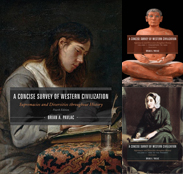Chapter 15
Into the Future: The Contemporary Era, 1980 to the Present
- Link to Study Guide for this chapter
- Link to Primary Sources for this chapter
- Link to Art History for this chapter
- Link to Links to the Web for this chapter
Searching for Stability
The creation of the European Union during and after the Cold War brought peace and prosperity to much of Europe.
An Unexpected Revival
Nationalism in the Post-Cold War era revived old and creates new conflicts.
Haves and Cannots
Economic troubles increased in industrialized nations.
Values of Violence
Despite hopes for peace dividends, conflicts broke out over ethnic identity and political ideology.
The Walls Go Up Again
Ethnic conflict over immigration and increasing authoritarianism lead to further divisions in the West and the World.
The Equivalent of War
A pandemic, a military conflict in Europe, and assault on truth.
Last Updated: 2023 June 3



